Invited speakers - 1
The FuSeM 2009 secretariat is proud to announce the list of invited speakers. The details of the remaining confirmed invited speakers will be advertised as they become available.
KEYNOTE: Professor Robert J. Young (FREng) - School of Materials - University of Manchester, UK
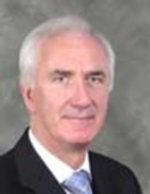
Biographical notes
Professor Young studied Natural Sciences at the University of Cambridge and gained his PhD in 1973. After working at Queen Mary College in London he became Professor of Polymer Science and Technology in Manchester in 1986. From 1992 to 1997 he was the Royal Society Wolfson Research Professor of Material Science. Professor Young also chaired the Metallurgy and Materials panels for the UK Research Assessment Exercises in 1996 and 2001. In 2004 he was appointed Head of the School of Materials in the newly-formed University of Manchester and elected to the Royal Academy of Engineering in 2006.
Professor Young’s main research interest is the relationships between structure and properties in polymers and composites, publishing over 300 papers and a number of books. He is listed in the ISI HighlyCited.com for his publications in Materials Science. His interests have extended recently to the field nanotechnology.
Stress Sensing in Polymer Nano-Composites
Raman spectroscopy can be employed to follow stress in a variety of nanostructured polymer composite systems. It will be shown that large stress-induced Raman band shifts are found for a variety of nano-reinforcements such as carbon nanotubes. The bands shifts obtained in composites can be employed to follow the efficiency of stress transfer and hence reinforcement. Examples will be given of a number of composite systems and applications such as stress sensitive coatings for glass fibres.
Prof. Keiichi Kaneto - Kyushu Institute of Technology - Japan
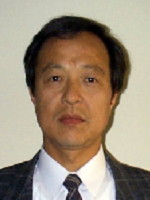
Biographical notes
After obtaining a Doctor Degree of Engineering at Osaka University, Keiichi Kaneto becomes an Associate professor at the Faculty of Engineering of the same university. In April 1988, he becomes full professor at the Faculty of Computer Science and Systems Engineering, Kyushu Institute of Technology. After a few years as visiting researcher at the University of Pennsylvania and at the CEA in Grenoble, he is Professor at the Graduate School of Life Science and Systems Engineering, Kyushu Institute of Technology.
Current Status and Prospect of Conducting Polymer based Soft Actuators
Soft actuators mimicking muscles based on electrochemomechanical deformation of conducting polymers are prospective for driving force of future robots. The maximum strain obtained so far is 40 %, which is much larger than that of natural muscles of 25-30%. The contraction force of the soft actuators is several tens MPa, which is also larger than that of muscle by more ten times. In this talk, basic mechanism and recent topics on the training and fatigue of conducting polymer soft actuators will be mentioned as well as the current status of various soft actuators.
Prof. Attila Bereck - Bergische Universität Wuppertal - Germany
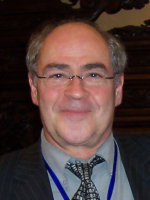
Biographical notes
Study of Colloid Chemistry in Budapest/Hungary, Ph.D. in 1973. 1966-1973: Lecturer at a Technical College and at the Polytechnical University in Budapest, 1973-1985: Project Leader at DWI at the RWTH Aachen 1986-1989: BASF AG Ludwigshafen, Development of Textile Auxiliaries Since 1989: Professor at the University of Wuppertal, lectures and research in Textile, Human Hair, Macromolecular, Colloid and Surface Chemistry. Retired 2008 but still active both in research and teaching
Cyclodextrins in Textile Finishing
Following a general overview of applications and the mode of action of cyclodextrins (CDs) in textile finishing methods for the permanent fixation of CDs onto texiles and approaches to their quantitative analysis including a new method developed at Wuppertal University will be reviewed. A quantitative study, utilizing this method, on the covalent fixation, washing fastness and formaldehyde release of CD-containing finishes will be presented.
Prof. Tadamoto Sakai - Tokyo Office of Shizuoka University
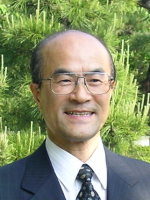
Biographical notes
Tadamoto Sakai is now the JSW Fellow Emeritus. He has been working as the president of Japanese Society of Polymer Processing and Visiting Professor of Kyoto university, university of Tokyo and Shizuoka university. Now he is the visiting Professor of Shanghai Jiao Tong university in China. He is also the Chief-editor of JSPP journal. He received many awards of polymer processing society and has about 200 papers, 70 patents, 35 books (co-author) and 300 speeches at international symposia.
New Polymer Processing Technologies to Create Highly Functionalized Product
Recent progress in polymerization technology allows the easy control of precise structure of a synthetic polymer, as well as lower cost production using by large scale chemical plants. In addition to the progress, one of today’s important issues in our industry is how to develop key technologies contributing to both sustainability and higher performance. To meet with today’s trends, we should utilize more sophisticated technology in creating highly functionalized and hybridized polymer products. In this paper newly emerging polymer processing technologies, for example, in hybridized reactive blending and sophisticated injection molding to produce various fine products with highly-added values are discussed, mainly from practical points of views.
Prof. In-Joo Chin - Department of Polymer Science and Engineering - Inha University - Korea
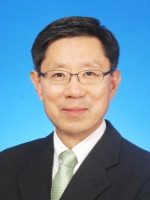
Biographical notes
In-Joo Chin received his PhD in polymers from the Massachusetts Institute of Technology in 1983, with postdoctoral research at MIT and University of Connecticut. He is currently Professor of Polymer Science and Engineering at Inha University. In over 30 years of activity, Prof. Chin has published more than 100 research papers in polymers and nanomaterials and has co-authored three books. Current research interests include organic-inorganic nanohybrids, bio-based and biodegradable polymers and composites, encapsulation of modified polymeric particles and electrophoretic nanoparticles.
Structure and Property Relationships in Polymer Nanohybrids Based on Polyhedral Oligomeric Silsesquioxane
The structure-property relationships of nanohybrids comprised of polymers and various types of polyhedral oligomeric silsesquioxane (POSS) were investigated. In particular, the specific interactions between POSS and various polymer systems were examined from the thermodynamic viewpoint. The effect of POSS on the physical and rheological properties was evaluated to corroborate the theoretical analyses.
Prof. Enrico Traversa - MANA, National Institute for Materials Science - Japan
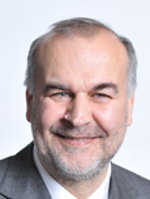
Biographical notes
Enrico Traversa has been working at Department of Chemical Science and Technology, Faculty of Engineering, University of Rome "Tor Vergata" for 20 years. Now he is the Principal investigator in nano-green field at MANA, Japan. His current research interests are oriented mostly in the study of nanostructured materials for health, environment, and energy, including materials for fuel cells (both polymeric, PEMFC, and solid oxide, SOFC), chemical sensors (semiconductor and electrochemical), and innovative photovoltaics. Great attention is given to the synthesis and processing of nanostructured materials, tailoring also hierarchical porosity. Recent interests are in recycling plastics and scaffolds for cardiac tissue engineering and regenerative medicine.
Tuning Hierarchical Architectures of 3D Polymeric Scaffolds for Cardiac Tissue Engineering
The challenge for successful exploitation of cardiac regenerative medicine is to identify the suitable combination between the best cell source for cardiac repair and the design of the optimal scaffold as a template for tissue replacement. Scaffolds composed of natural and/or synthetic polymers can organize stem cells into complex architectures that mimic native tissues. To achieve this, a proper design of the chemical, mechanical, and morphological characteristics of the scaffold at different length scales is needed to reproduce the tissue complexity at the cell-scaffold interface. This talk will present work undertaken to setup strategies to integrate stem cells and tailored scaffolds, as a tool to control cardiac tissue regeneration.
Dr. Kinji Asaka - National Institute of Advanced Industrial Science and Technology - Japan
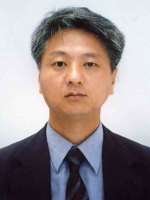
Biographical notes
Kinji Asaka received the phD degree in Science from Kyoto University in1990. He is currently a Group Leader of the Artificial Cell Research Group, Research Institute for Cell Engineering of the National Institute of Advanced Industrial Science and Technology (AIST). His current research interests include interfacial electrochemistry and polymer actuators. He is a member of SPSJ, SICE, RSJ and JSME.
Fully plastic actuators based on dispersed carbon-nano tube/ionic-liquid-gel electrodes
An electroactive polymer actuator based on the active electrodes composed of single-walled carbon nanotubes, ionic liquids and polymer supports has been developed. The actuator can be operated in air at low applied voltages. In this presentation, the improved performance of the actuator will be reported.
Prof. Toribio Fernandez Otero - Technical University of Cartagena - Spain

Biographical notes
Doctor Degree from the Complutense University (Madrid) in 1978. Full Professor of Physical Chemistry and Macromolecules of the University of the Basque Country from 1989. Co-founder and first president (1997) of CIDETEC, a private foundation for the transfer of electrochemical and polymeric technologies. In 2002 he became Full Professor of Physical Chemistry at the new Technical University of Cartagena. He has published over 250 papers, 20 book chapters and 7 patents, and supervised 23 doctoral theses.
His work mainly concerns electrogeneration, electrochemical properties, electrochemical devices and theoretical modelling of reactive conducting polymers. All organic batteries, electrochromic windows, artificial muscles, smart membranes, smart drug delivery devices and nervous interfaces attract most of his interest.
Conducting polymers as simultaneous sensor-actuators. Conformational Energy.
Electrochemical reactions from films of conducting polymers link the driving current with potential response from the film through the ambient variables: chemical concentration, temperature, pressure or mechanical conditions, etc. During reactions the potential (and the consumed electrical energy) is a sensor of the ambient. A new technology based on sensing-actuators, mimicking biological organs and functions, is emerging. Any device based on electrochemical reactions from conducting polymers (or any organic and reactive materials) as: artificial muscles, polymeric batteries, smart electrochromic windows, smart membranes, drug delivery devices, artificial nervous interfaces, etc, should be expected to work, simultaneously, as a sensor of the working conditions. Artificial muscles sensing the ambient and tactile muscles will illustrate some of the new possibilities.
Dr. Iryna Yakimets - Holst Centre, Eindhoven - Netherlands

Biographical notes
Dr. Iryna Yakimets studied Mechanics of Materials at the Universite de Technologie de Compiegne (France) and gained her PhD in 2004. After working few years at Nottingham University (UK) on water dependent mechanical behavior of biopolymer films, she obtained a Research Position at Holst Centre (Eindhoven, Netherlands) in 2008. Dr. Yakimets currently working on dimensional stability of polymer foils used as substrates for flexible electronics.
Polymer substrates for flexible electronics: achievements and challenges
The flexible electronics technology can potentially result in many compelling applications not satisfied by the rigid Si-based conventional electronics. Commercially available foils such as polyethylene terephthalate (PET) and polyethylene naphthalate (PEN) have emerged as the most suitable polymer materials for flexible electronics applications. Despite the enormous progress, which has been recently done on optimization of physical and mechanical properties of PET and PEN foils, their dimensional stability on micro-scale is still a major obstacle to overcome during patterning of wiring by means of lithography. Consequently, the measurement of foil in-plane micro-deformation is of great importance for the understanding and prediction of its thermal, hydroscopic and mechanical behaviour during processing.
Prof. Richard M. Laine - Dept of Materials Science and Engineering - University of Michigan, Ann Arbor - USA

Silsesquioxane as Polyfunctional Nanobuilding blocks
Polyfunctional silsesquioxanes [RSiO1.5]n (n = 8, 10, 12; R = alkyl, aryl and R’SiMe2O, R’ = H, R) are unique molecules with single crystal silica cores and with functional groups spaced equally on a 3-D, mostly spherical surface. These materials are easily synthesized in high yields from simple starting materials with an extensive variety of functional groups. In a number of instances, it is possible to make bifunctional molecules. Consequently, these materials offer unique opportunities to engineer surfaces, tailor interfaces in composites, formulate nanocomposites with complete control of global properties and offer unique properties in their own right as polyfunctional materials.
Prof. Irina Smirnova - Technische Universitaet Hamburg-Harburg, Hamburg - Germany
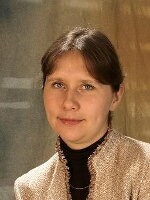
Applications of aerogels in life sciences
In this presentation an overview is given about the supercritically dried organic and anorganic gels (aerogels) in the fields of pharmacy, cosmetics, medicine, agriculture and biotechnology. Biocatalysis with a lipase enzyme captures one of the advanced silica aerogel researches. The in situ encapsulation of proteins and enzymes into aerogels was shown to be a very promising technique leading to the increase of biocatalytical activity. Furthermore aerogels are used as host matrix for bio-active compounds, which improve or enable their performance. A promising area here is the use of macroporous silica aerogels as biosensors.

















